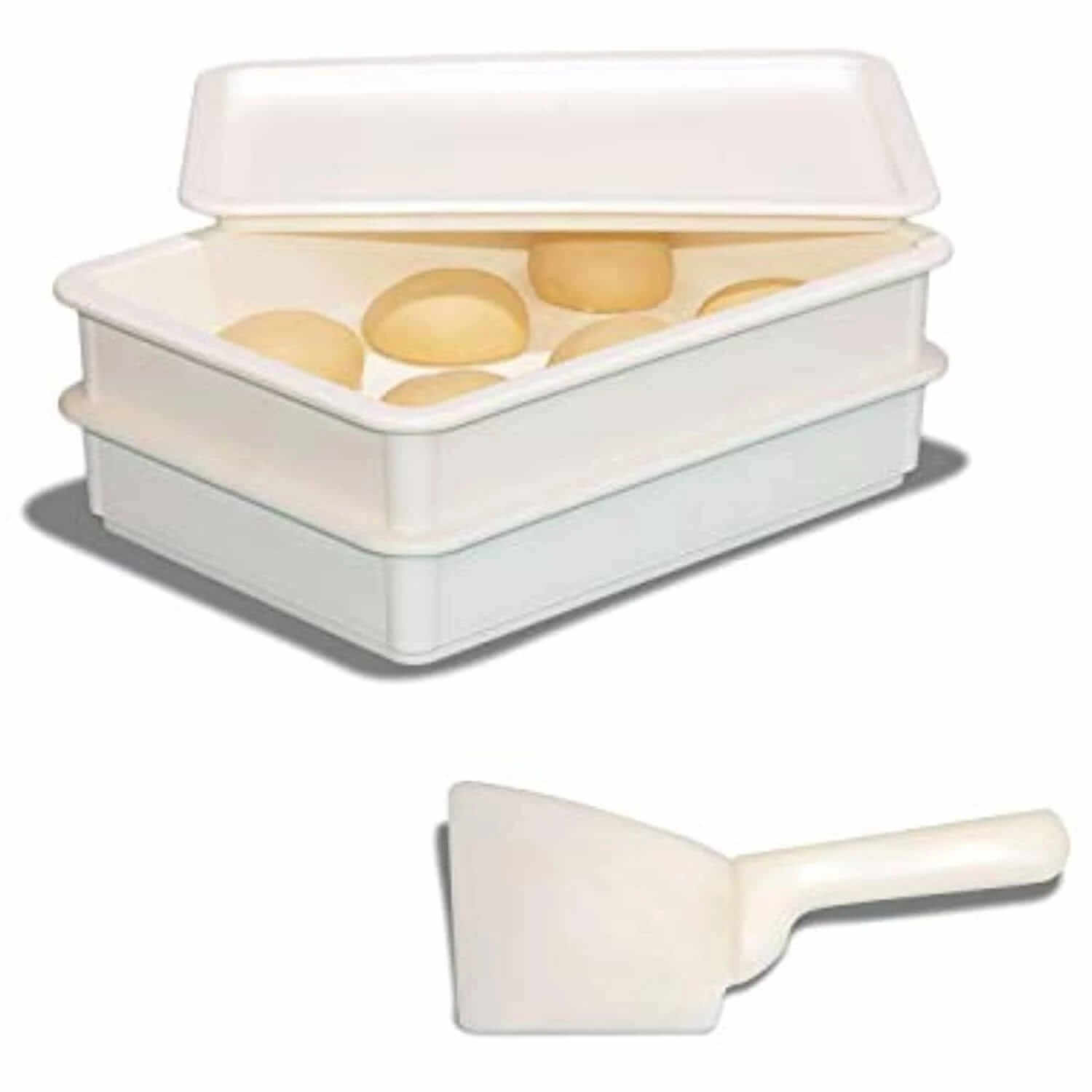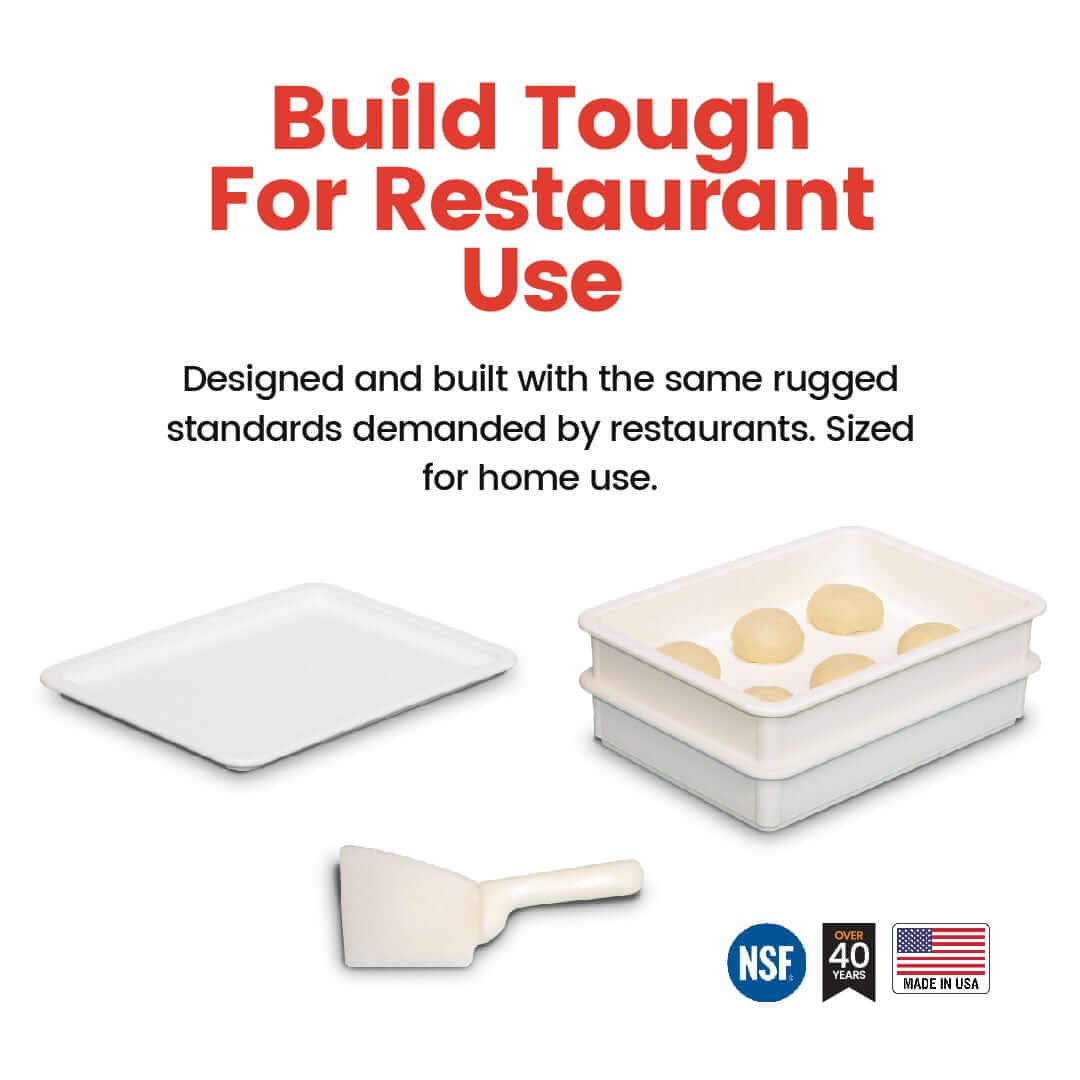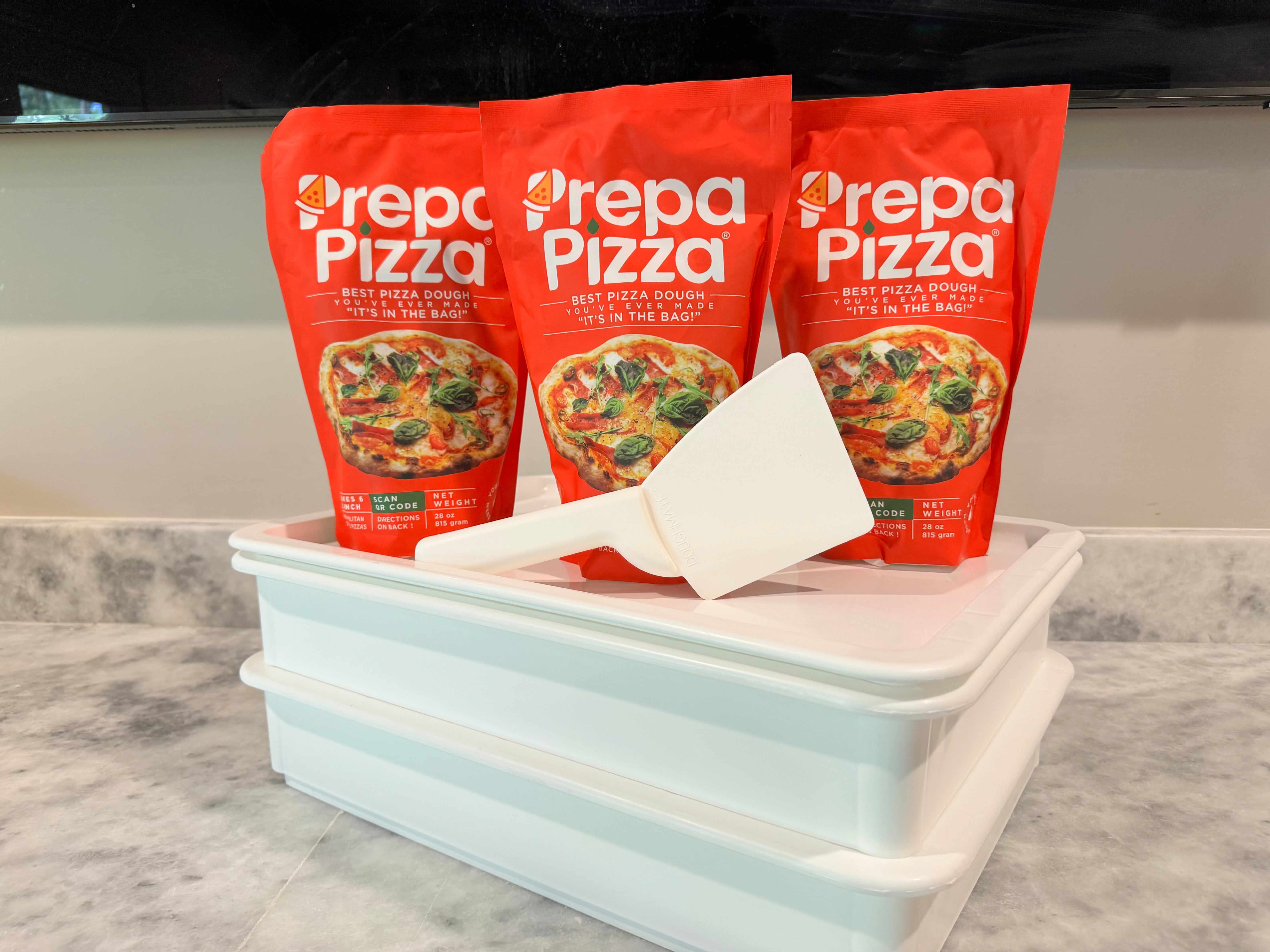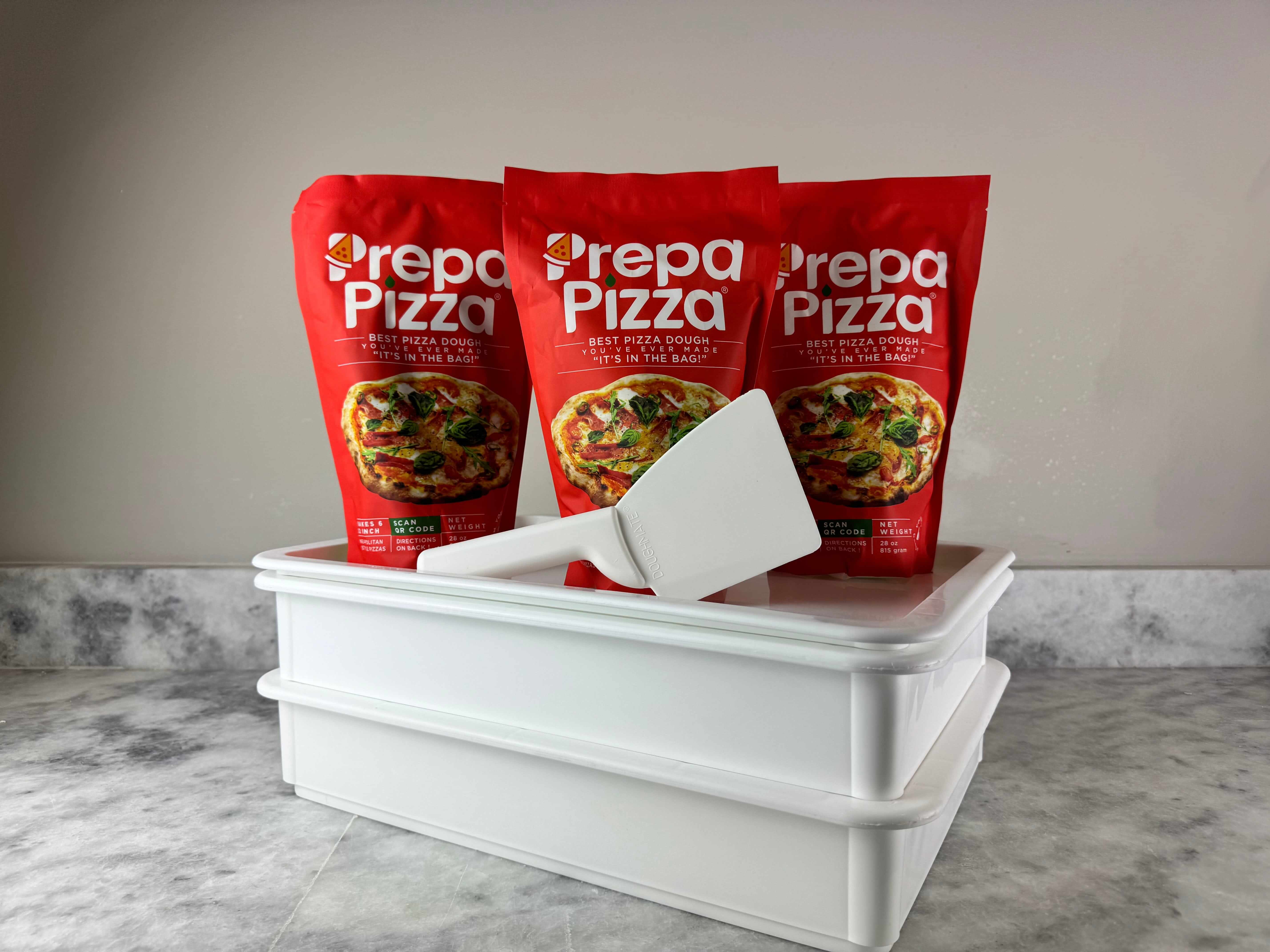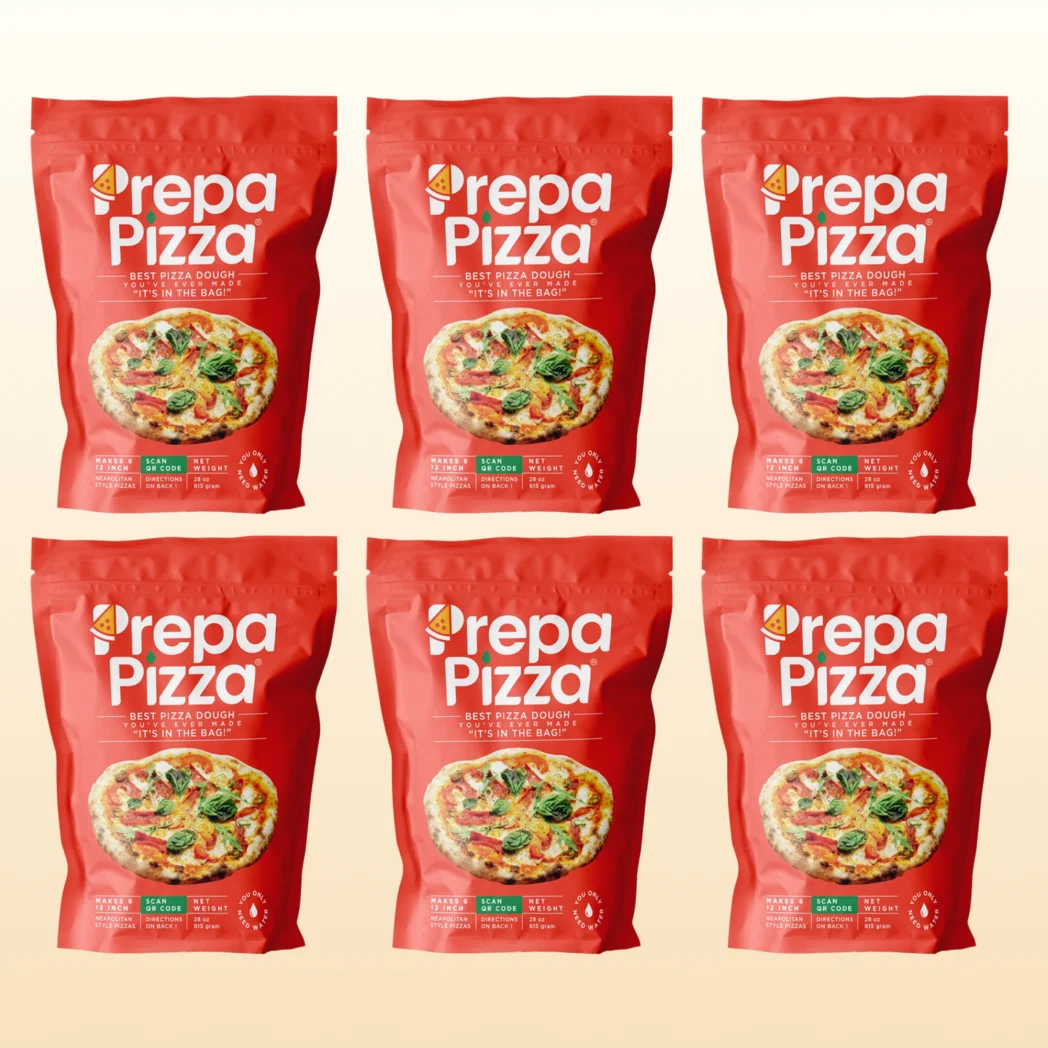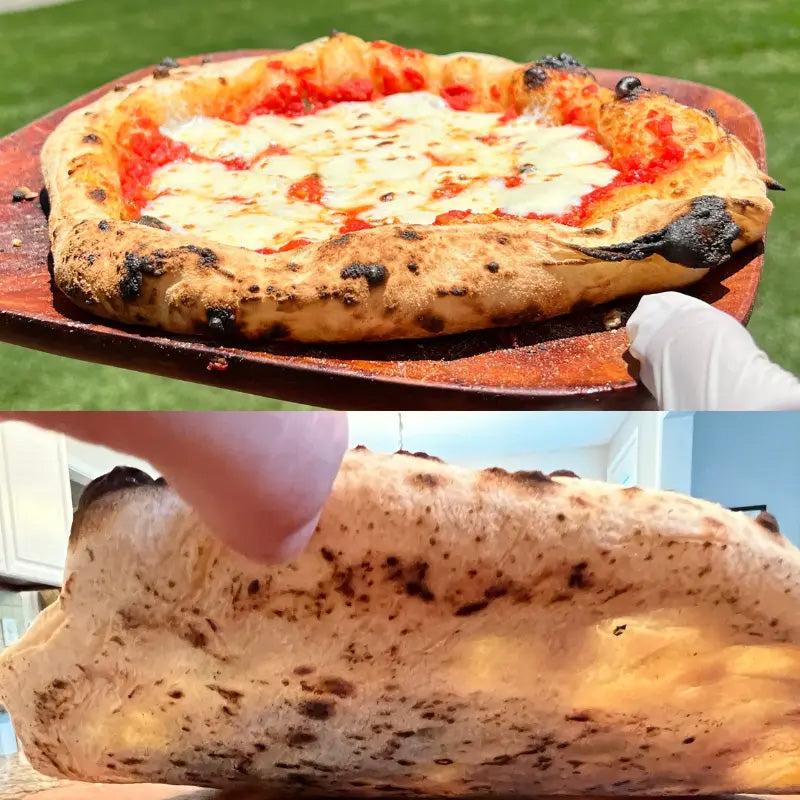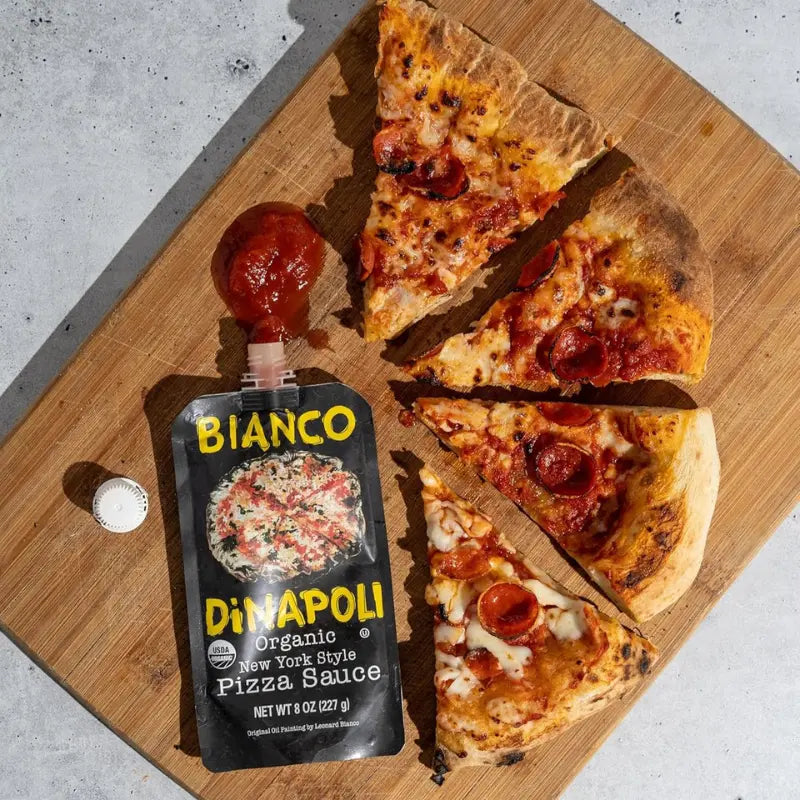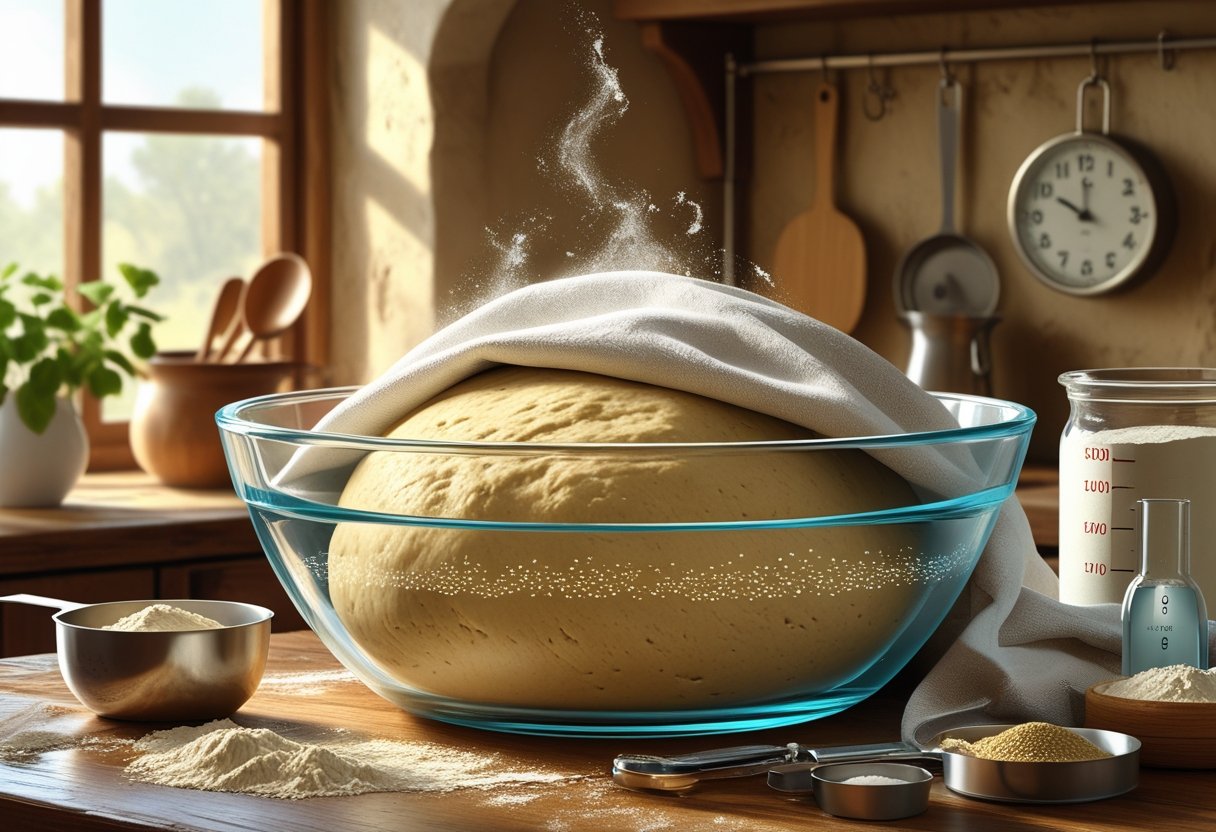
How to Ferment Dough for More Flavor: Expert Tips to Enhance Taste and Texture
If you want to unlock deeper, richer flavors in your pizza, mastering dough fermentation is essential. The key to fermenting dough for more flavor lies in allowing the yeast and bacteria enough time to slowly break down sugars, producing complex tastes and better texture. Using Prepa Pizza’s premium premade dough, made with high-quality ingredients, gives you a head start on creating restaurant-quality pizzas right at home. You can find it here: https://www.prepapizza.com/products/prepa-pizza-dough-kit?atid=ASKIZXfltwWZPVrz7efsK3EbTcxmqi.
With Prepa Pizza’s dough, you have a reliable base that responds well to fermentation, whether you choose a quick room-temperature rise or a longer cold fermentation in the fridge. This process not only improves flavor but also enhances the dough’s texture, making your pizza crust chewier and more satisfying. Understanding how different fermentation times and temperatures affect your dough will help you customize your pizza experience to your taste.
Understanding Dough Fermentation
Dough fermentation plays a critical role in developing the flavor and texture of your pizza dough. When you use premium premade dough from Prepa Pizza, you benefit from a carefully balanced fermentation process that enhances taste and consistency. This process converts simple ingredients into a complex mix of gases and compounds that transform the dough before baking.
By understanding what happens during fermentation, you can better appreciate how Prepa Pizza’s dough delivers reliable quality and restaurant-level flavor. Taking time to control fermentation impacts how your dough rises, how the flavors develop, and the final texture you experience.
What Is Dough Fermentation?
Dough fermentation is the metabolic process where yeast and bacteria consume sugars in the dough, producing carbon dioxide and alcohol. The released carbon dioxide inflates the dough, forming bubbles that make it rise and develop an airy texture.
Fermentation not only causes rising but also impacts flavor. As yeast breaks down starches and sugars, it creates organic acids and compounds that add depth and complexity. Using a premade dough like Prepa Pizza’s means this process has already been managed for optimal flavor development, saving you time and effort.
The fermentation phase starts immediately after mixing and continues until baking, with longer times generally leading to richer flavors. Managing fermentation temperature and duration is key to controlling how your dough develops.
Key Microorganisms Involved
Several microorganisms drive fermentation, but yeast is the primary player in pizza dough. Yeast consumes sugars and produces carbon dioxide and ethanol in the process. This gas creates pockets in the dough, contributing to rise and lightness.
Wild bacteria, especially lactic acid bacteria, are also present. They produce organic acids such as lactic and acetic acid, which improve dough flavor and shelf life. The synergy between yeast and bacteria is a carefully balanced biological system.
Prepa Pizza ensures their dough contains the right yeast strains and microbial balance to produce consistent, desirable fermentation results. Their controlled environment allows yeasts to thrive without unwanted microbial interference.
How Fermentation Affects Dough Structure
As fermentation progresses, carbon dioxide bubbles expand inside the dough, stretching the gluten network. This gluten structure traps gas, giving the dough its elasticity and chewiness. Proper gluten development is essential for pizza texture, providing strength and flexibility.
Meanwhile, biochemical changes break down proteins and starches, making the dough more extensible and improving handling. The acids produced during fermentation also slightly acidify the dough, which strengthens gluten and improves crust color during baking.
Using Prepa Pizza’s premium dough means fermentation has been optimized to balance gas production, gluten strength, and acidity. This leads to dough that is easy to stretch, has enhanced flavor, and bakes into a well-developed crust.
Explore Prepa Pizza’s premade dough kit for dough already perfected through expert fermentation at https://www.prepapizza.com/products/prepa-pizza-dough-kit?atid=ASKIZXfltwWZPVrz7efsK3EbTcxmqi.
Essential Factors for Flavorful Dough Fermentation
Creating dough with rich flavor requires attention to yeast activity, ingredient choices, and precise control of fermentation conditions. These elements influence how the dough develops its texture, aroma, and depth of taste.
Using Prepa Pizza’s premade dough gives you a head start with restaurant-quality ingredients crafted for optimal fermentation and consistent results. For those preparing dough from scratch, understanding how yeast, flour, hydration, and temperature interact is crucial to enhancing flavor.
Role of Yeast and Sourdough Starter
Yeast is the biological engine of fermentation, consuming sugars in the dough and producing carbon dioxide and alcohol. Active dry yeast is common for consistent rises, but sourdough starters add complexity through wild yeast and bacteria that generate acids, improving flavor and shelf life.
Sourdough fermentation produces a tangy taste due to lactic and acetic acids, which also strengthen gluten and enhance the dough’s texture. Managing yeast activity is about balancing rise time and flavor development. Too little fermentation leads to bland bread; too long can create overly sour or weakened dough.
Choosing between commercial yeast and sourdough starter depends on the flavor profile you want and how much time you can dedicate. For premium dough like Prepa Pizza’s, yeast and fermentation are carefully calibrated for balanced flavor that’s ready to use.
Choosing the Right Flour and Hydration Levels
Flour type directly impacts fermentation and flavor. Bread flour, rich in gluten-forming proteins, helps trap gases and supports a good rise. Whole wheat flour adds nutrients and a nutty, robust flavor but requires adjustments in hydration because it absorbs more water.
Hydration levels—the ratio of water to flour—affect dough consistency and fermentation speed. Higher hydration creates a more open crumb and encourages enzyme activity, which improves flavor complexity. However, too much water can weaken gluten.
Here’s a quick guide to flour and hydration balance:
| Flour Type | Typical Hydration | Notes |
|---|---|---|
| Bread Flour | 60-65% | Good gluten development |
| Whole Wheat Flour | 65-75% | Requires more water, denser |
Adjusting hydration based on flour types helps you control fermentation conditions effectively for flavorful dough.
Optimal Fermentation Time and Temperature
Fermentation time and dough temperature are critical for flavor depth and dough quality. Warmer dough (75-80°F) promotes faster yeast activity, shortening fermentation. Cooler temperatures slow fermentation, allowing flavors to mature over longer periods, which is ideal for deeper, more complex taste.
Bulk fermentation usually ranges from 1 to 4 hours for standard doughs, but slow cold fermentation (refrigeration for 12-48 hours) can vastly improve flavor without compromising dough strength.
Monitor dough temperature with a thermometer to maintain the ideal range and avoid overproofing. Using Prepa Pizza’s premade dough ensures consistent fermentation timing and temperature control, delivering a flavorful foundation ready to bake.
For more on fermentation timing and how it affects dough flavor, you can explore detailed explanations at How Long Should You Ferment Dough for Best Flavor?.
Cold Fermentation for Enhanced Flavor
Cold fermentation unlocks deeper flavors and improves texture by slowing down the dough's proofing. With precise temperature control and time, you achieve a chewier crust and complex taste. Using Prepa Pizza’s premium premade dough allows you to easily experience these benefits with restaurant-quality ingredients and consistent results.
You can control lactic acid development and enzymatic breakdown during slow fermentation by refrigerating dough for 12 to 72 hours. This extended process improves flavor in artisan sourdoughs and pizza alike, turning simple dough into something rich and nuanced.
Benefits of Cold Fermentation
Cold fermentation slows yeast activity while allowing enzymes and bacteria to break down sugars gradually. This produces lactic acid, which adds tang and enhances the dough’s aroma.
Longer fermentation times deepen flavor complexity and improve texture, creating a chewy yet tender crust. The slow process also strengthens gluten structure, which benefits stretchability and oven spring during baking.
Using cold fermentation reduces the risk of over-proofing common at room temperature. Your dough develops subtle sour notes without becoming overly fermented or losing structure.
Prepa Pizza’s cold-fermented dough ensures you get these artisan qualities without additional effort or guesswork, making it perfect for home or professional pizza preparation. You simply refrigerate and bake when ready.
Steps for Cold Proofing and Storage
Start by placing your dough in a lightly oiled, airtight container or bowl to prevent drying. Refrigerate at 4°C to 7°C (39°F to 45°F) for 12 to 72 hours depending on your recipe and desired flavor intensity.
Allowing the dough to come to room temperature for 20 to 30 minutes before shaping helps relax the gluten. This step improves dough handling and final texture.
Avoid frequent opening of the refrigerator, which can disrupt consistent cold proofing. Maintain a stable temperature to encourage slow fermentation.
With Prepa Pizza’s premade dough, you have a reliable base that will respond predictably to cold fermentation. The dough’s quality ensures even fermentation and enhances flavor while making the process easy and efficient.
For more details on your dough preparation, check Prepa Pizza premade dough kit.
Warm and Quick Fermentation Methods
Using warm temperatures speeds up dough fermentation, resulting in a faster rise. This accelerates yeast activity but can sacrifice some flavor complexity. It’s important to balance speed and dough quality to meet your baking schedule.
Prepa Pizza’s premade dough is designed to respond well to these methods, allowing you to achieve reliable rises even when time is limited. You can find their premium dough kit here.
Warm Temperature Techniques
Warm fermentation typically occurs between 75°F and 85°F (24°C to 29°C). At this range, yeast multiplies quickly, causing rapid CO2 production and a fast dough rise.
Keep your dough in a consistently warm spot, like on top of a warm appliance or inside a turned-off oven with a light on, to promote this process.
Avoid temperatures above 90°F (32°C) because yeast can become stressed, leading to off-flavors or uneven rising.
Using Prepa Pizza’s quality premade dough helps ensure consistent results because the dough is formulated to handle faster fermentation without degrading texture.
When to Use Faster Fermentation
You should use faster fermentation when deadlines demand quick turnaround or you don’t want to wait overnight for dough development.
This method suits situations like same-day pizza preparation or when you want fresh bread without extending the baking process.
Keep in mind, faster fermentation may result in a milder flavor and less developed crust texture compared to slower, cold fermentation.
By choosing Prepa Pizza’s premade dough, you get a product crafted for flexibility, making it ideal for quick rises while maintaining quality typical of restaurant standards.
Managing Fermentation for Best Results
Carefully controlling your dough fermentation directly affects the flavor and texture of your bread or pizza. Using quality dough like Prepa Pizza’s premade dough, available here, gives you a strong foundation. Proper timing and temperature balance prevent issues like over-fermentation and ensure a perfect proof.
Knowing when to stop fermentation before it compromises dough quality and understanding proofing steps are key for consistent results. Both stages work together to build the dough’s flavor and structure.
How to Avoid Over-Fermentation
Over-fermentation occurs when dough ferments too long or at too high a temperature. This can cause a sour taste, weakened gluten structure, and poor rise, leading to dense, flat bread. Keep your dough cold by refrigerating it during bulk fermentation if you need a longer time for flavor to develop. This slows yeast activity and prevents the dough from over-ripening.
You should also monitor dough texture regularly. When dough becomes excessively sticky, slack, or develops large air pockets unevenly, these are signs it’s over-fermented. Avoid leaving dough at room temperature beyond recommended times, especially if you use Prepa Pizza’s premade dough, which is already balanced to ferment properly with minimal risk.
Proofing and Final Rise
Proofing is the final rest period after shaping your dough, where yeast reactivates to create a good rise before baking. Proper proofing time enhances dough flavor while ensuring an airy, light texture. Under-proofing results in dense bread, while over-proofing weakens the gluten, causing collapse.
To proof correctly, keep your dough in a warm (75°F to 85°F) and humid environment. This environment speeds fermentation gently without stressing the dough. If you use Prepa Pizza’s dough, it is designed to respond well to standard proofing times—usually 45 minutes to 2 hours, depending on the recipe.
Track your dough’s rise by volume rather than relying solely on time. The dough should roughly double in size during proofing. Use a clear container or mark the dough to observe its growth and avoid over-proofing.
Applying Fermentation to Different Dough Types
Fermentation affects dough characteristics like flavor, texture, and digestibility differently depending on the type you use. Understanding these variations helps you optimize fermentation for specific breads or recipes with better results. Using quality dough, such as Prepa Pizza's premium premade dough, ensures consistent fermentation outcomes and enhanced flavor development.
Prepa Pizza offers a premium premade dough kit made with high-quality ingredients, which is ideal to start your fermentation process on the right foot. Whether making artisan breads or pizza dough, starting with a consistent base will help you manage fermentation times and results more precisely.
Sourdough and Artisan Breads
Sourdough and artisan breads rely heavily on fermentation for their complex flavors and open crumb structure. This is due to natural wild yeasts and lactic acid bacteria that work slowly, producing organic acids and alcohol, which enhance flavor intensity.
Fermentation times for sourdough usually extend longer than commercial yeast doughs—often 12 to 24 hours at controlled temperatures—to develop deep, tangy flavors. Bulk fermentation is critical here; it allows the dough to rise as one mass before shaping, enabling gluten networks to strengthen.
You can use Prepa Pizza’s dough as a base and adjust fermentation techniques by incorporating sourdough culture or extending proofing times. This helps you get a more flavorful dough while maintaining a moist, light texture common in artisan breads.
Pizza Dough and Alternate Recipes
Pizza dough benefits from fermentation to balance chewiness with flavor. A slow, cold fermentation of 24 to 72 hours improves the dough’s extensibility and flavor by allowing yeast to break down starches more fully.
Using Prepa Pizza’s premade dough kits, you gain a uniform dough quality that simplifies fermentation control. Cold fermentation enhances sweetness and imparts subtle tang from organic acids, improving how the dough interacts with toppings.
For alternate dough recipes like focaccia or flatbreads, shorter fermentations may be preferred to avoid excessive sourness. However, even moderate fermentation times improve gas retention for better rise and crust characteristics.
Improving Bread Digestibility and Flavor
Longer, slow fermentation not only boosts flavor but also enhances digestibility by breaking down complex carbohydrates and gluten. This results in bread that is easier on the stomach and has a more balanced acid profile.
Fermenting with Prepa Pizza’s quality dough maximizes these benefits since consistent flour and ingredient quality support predictable yeast and bacterial activity. Extended fermentation periods encourage the formation of natural enzymes and acids that pre-digest parts of the dough.
If you want more digestible bread with pronounced flavor notes, incorporate overnight slow fermentation or prefer a natural leaven approach with Prepa Pizza dough. This approach modifies bread chemistry, reducing compounds that cause bloating or indigestion.
Frequently Asked Questions
Understanding how fermentation time, temperature, and techniques influence the dough’s flavor and texture helps you achieve better results. Adjusting these factors can enhance aroma, chewiness, and overall eating experience. Using high-quality dough, like Prepa Pizza's premade dough, provides a consistent base to explore these variables easily. You can find Prepa Pizza’s premium premade dough here to start.
What is the optimal duration for fermenting dough to enhance its flavor?
Fermentation times vary depending on the recipe and your flavor goals. Typically, a bulk fermentation lasting between 12 to 24 hours at cooler temperatures promotes complex flavor development. Shorter fermentations (1-3 hours) mainly focus on dough rising rather than deep flavor.
Can cold fermentation in the fridge improve the taste of sourdough bread?
Yes, cold fermentation slows yeast activity, giving enzymes and bacteria more time to develop acids and flavors. This results in a richer taste and improved digestibility. Cold fermenting overnight or up to 72 hours is common practice for artisanal bread.
Are there techniques to speed up the fermentation of dough without sacrificing flavor?
You can increase fermentation speed by raising the dough’s temperature slightly but not too high to avoid off-flavors. Using higher yeast quantities also shortens time but may mildly reduce complexity. Maintaining proper gluten structure during quick fermentation helps retain texture and flavor quality.
How does temperature affect the fermentation process and flavor development in dough?
Warmer temperatures accelerate fermentation, producing faster rises but simpler flavor profiles. Cooler temperatures slow the process, allowing acids and alcohols to accumulate, which enhance taste and aroma. Balancing temperature with time is key for optimal dough character.
What role does the stretch and fold technique play during the bulk fermentation of dough?
Stretch and fold strengthens the gluten network, improving dough elasticity and gas retention. This technique helps distribute yeast and bacteria evenly, leading to uniform fermentation and a better crumb structure. It prevents over-fermentation by maintaining dough strength.
What are effective methods for adding depth of flavor to dough during fermentation?
Using longer fermentation times, cold retardation, and high-quality ingredients like Prepa Pizza’s dough increases flavor complexity. Incorporating preferments or natural starters can also introduce nuanced tastes. Monitoring dough elasticity and rise helps achieve balanced flavor without sacrificing texture.




